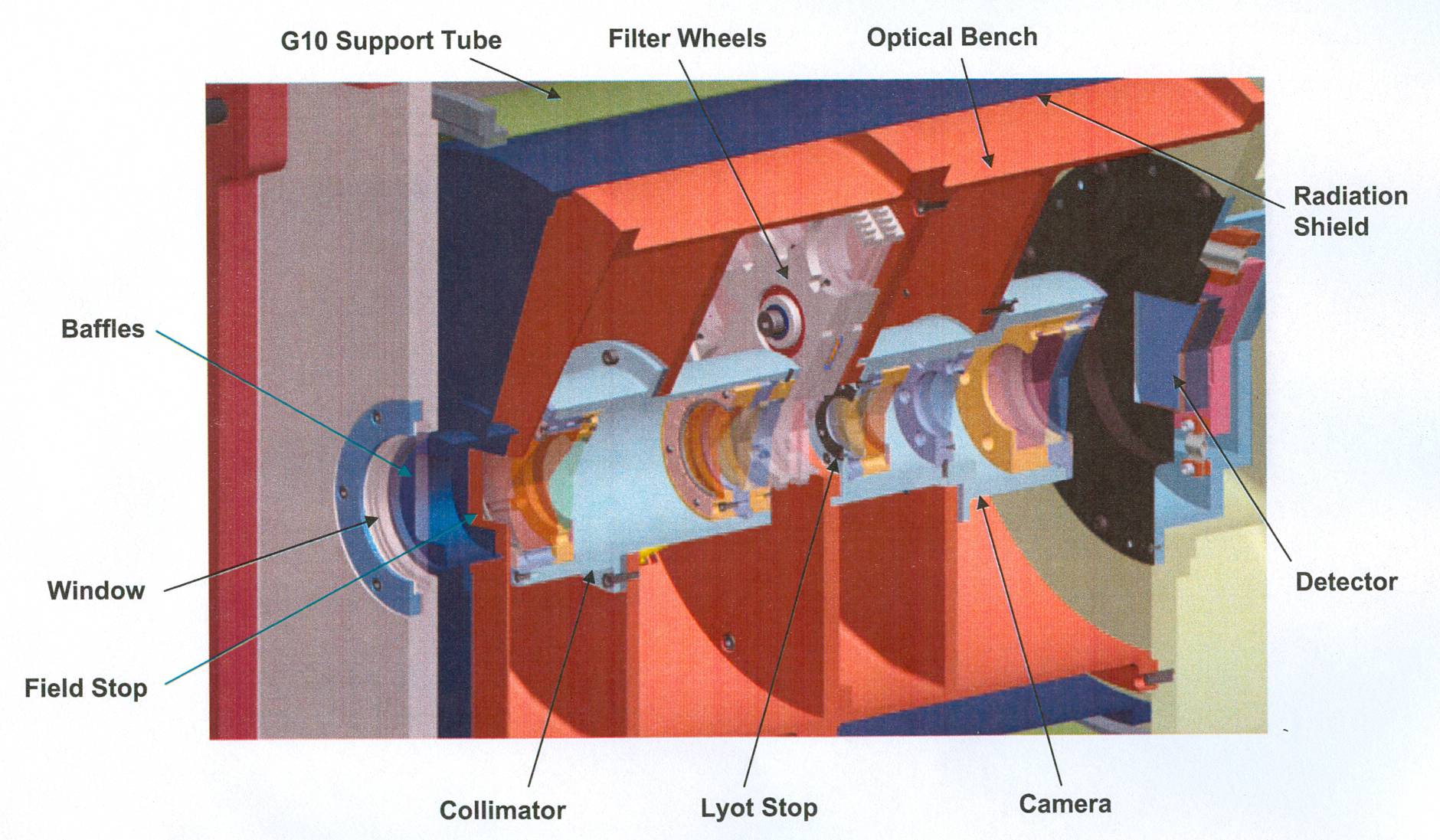WIYN High-Resolution Infrared Camera (WHIRC)
The WHIRC instrument on the WIYN 3.5-meter Telescope at Kitt Peak National Observatory.
The WIYN High-Resolution Infrared Camera (WHIRC) is a near-infrared (0.9–2.5 μm) imager on the WIYN 3.5-meter Telescope at Kitt Peak National Observatory. It takes advantage of the excellent image quality produced by the telescope and its image stabilization subsystem, the WIYN Tip Tilt Module (WTTM), which is located on one of two Nasmyth ports. The optical system features a five-element collimator with five lenses to align incoming light waves parallel for sharp imaging, and a five-element camera, also with five lenses, to accurately focus the light onto the detector.
WHIRC’s 0.1-arcsecond pixel scale and 3.3-arcminute field of view are designed to take advantage of the excellent seeing conditions at Kitt Peak and the near-diffraction-limited image quality (~0.2 arcseconds) which WTTM is expected to deliver in the 2-micron band. WHIRC is designed to achieve a broad range of scientific goals in stellar physics, star-forming regions, and the interstellar medium in galactic and extragalactic sources.
WHIRC is equipped with two eight-position filter wheels, accommodating a total of 13 filters. Each filter wheel has one open position and one wheel holds an opaque blocker for taking dark frames. The three broadband filters are standard J, H, and Ks filters. Narrowband filters target specific features: He I for H II regions and planetary nebulae, Br γ and Pa β for ionized gas, [Fe II] for photodissociation regions and planetary nebulae, H2S(1) for shocked molecular gas, and CN and CO for cool stellar atmospheres. Additionally, there is a second set of Br γ and [Fe II] that are specially designed to look for those emission lines in redshifted galaxies. Finally, a filter near 1.06 μm is for very low-background deep imaging or as a continuum filter for the He I filter.
Assembly drawing of WHIRC. The shim is used to adjust the axial location of WHIRC so that the WTTM focal plane is imaged onto the detector.
Close-up of previous figure showing the optical elements in more detail.
Science Highlights of WHIRC
- The First Data Release from SweetSpot: 74 Supernovae in 36 Nights on WIYN+WHIRC
- WHIRC Eyes M42, The Orion Nebula
Quick Facts
|
|
WIYN High-Resolution Infrared Camera (WHIRC) The technical information for astronomical observations is available at the NOIRLab Science webpage. |
|
|
Site |
Kitt Peak National Observatory |
|
Telescope |
WIYN 3.5-meter Telescope |
|
Type |
High Resolution Infrared Imager |
|
Wavelength range |
900–2500 nm |
|
Spatial resolution |
0.0986 arcsec/pixel |
|
Number of detectors |
1 |
|
Detector format |
2048 x 2048 pixels |
|
Field of view |
3.3 x 3.4 arcminutes |
|
Filters |
J, H, Ks, and 10 narrowband filters |
|
Date of first light |
2008 |
|
Science goals |
WHIRC is designed to be used for a variety of astronomical studies in the near-infrared, including star-formation regions, high-z galaxies, stellar populations, and interstellar medium in nearby galaxies. With its high spatial resolution and narrowband filters, WHIRC is particularly useful for follow-up observations of objects discovered in large surveys conducted at lower spatial resolution. |
|
Images taken with the instruments |
|
|
Images of the instrument |
|
|
Videos of the Instrument |
|
|
Press releases with the instrument |
|


